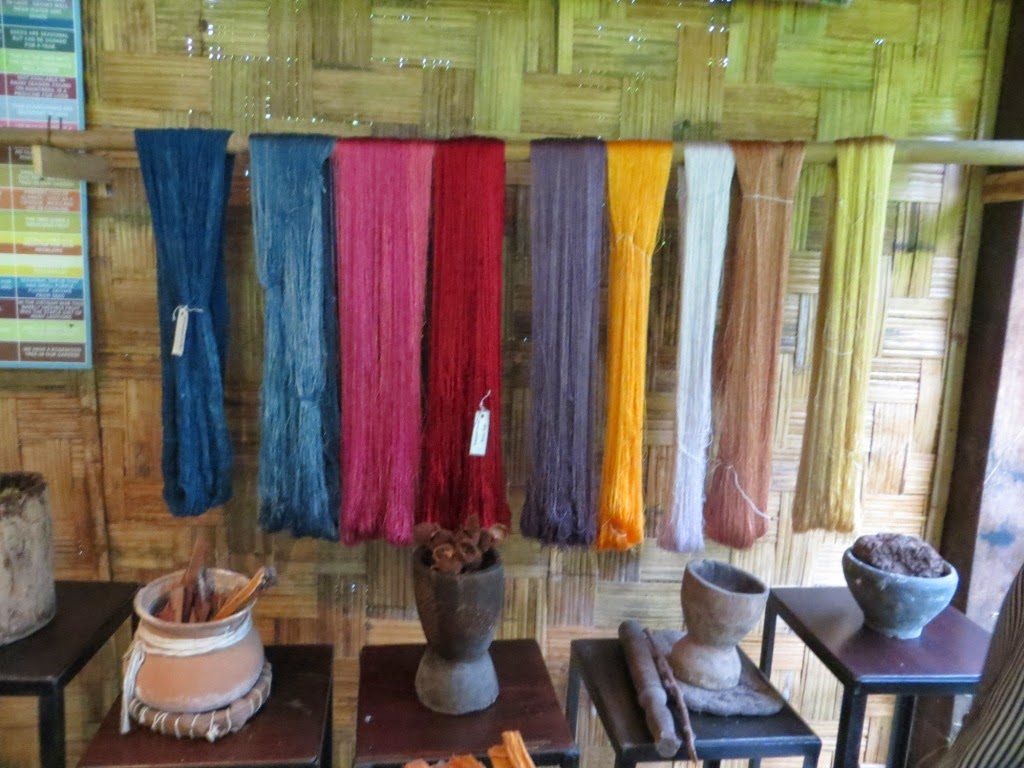Ock Pop Tok started in 2002 as a joint project of a local Lao woman and a British photographer. The organization supports local hill tribes to use weaving and dying skills. Our guide, Doua, was very knowledgeable and served to translate for the ladies who were our experts. What I learned from this experience is that natural dyes can be very brilliant and stable. Unfortunately none of the plants or trees grow in Canada. Except marigolds. Hmm. The weaving process is complex and takes years of experience to learn. The simple scarf I purchased would have taken more than two weeks of constant work by a master weaver. What I paid - a fraction of what it would cost in the West - means economic stability for the artist.
 |
| Different kinds of silk fiber from different kinds of silkworms. The thick nubby silk at the front is from Indian silkworms who do not eat mulberry leaves. |
 |
| The pattern. One of the rows of threads at a time will lift the warp threads to set the pattern for the colour Pretty cool wall hanging in its own right |
 |
| Our threads drying. Mekong River for the backdrop |
 |
| Thanks to Bec who took some photos of me looking quite talented |
 |
| My master quilter who made sure nothing went wrong. She's finishing off my hanging. |
 |
| Our class. I'm calling my project "Lemongrass and Teak Leaves" |
 |
| With our guide Doua |
 |
| My project. Three skeins of hand dyed silk thread Yet another scarf (aka mini quilt) |
Kopchai lai lai
(Thank you very much)





No comments:
Post a Comment